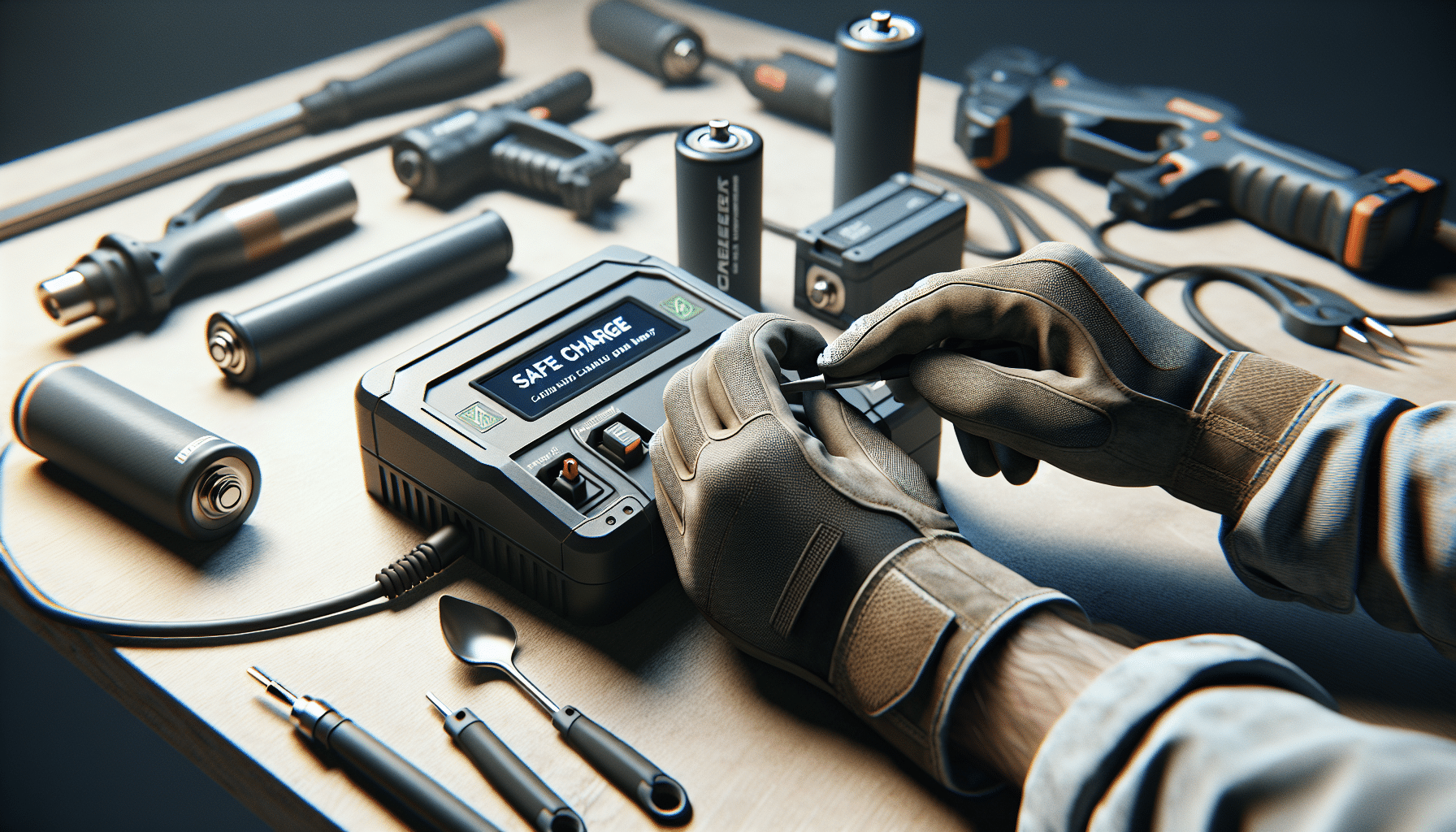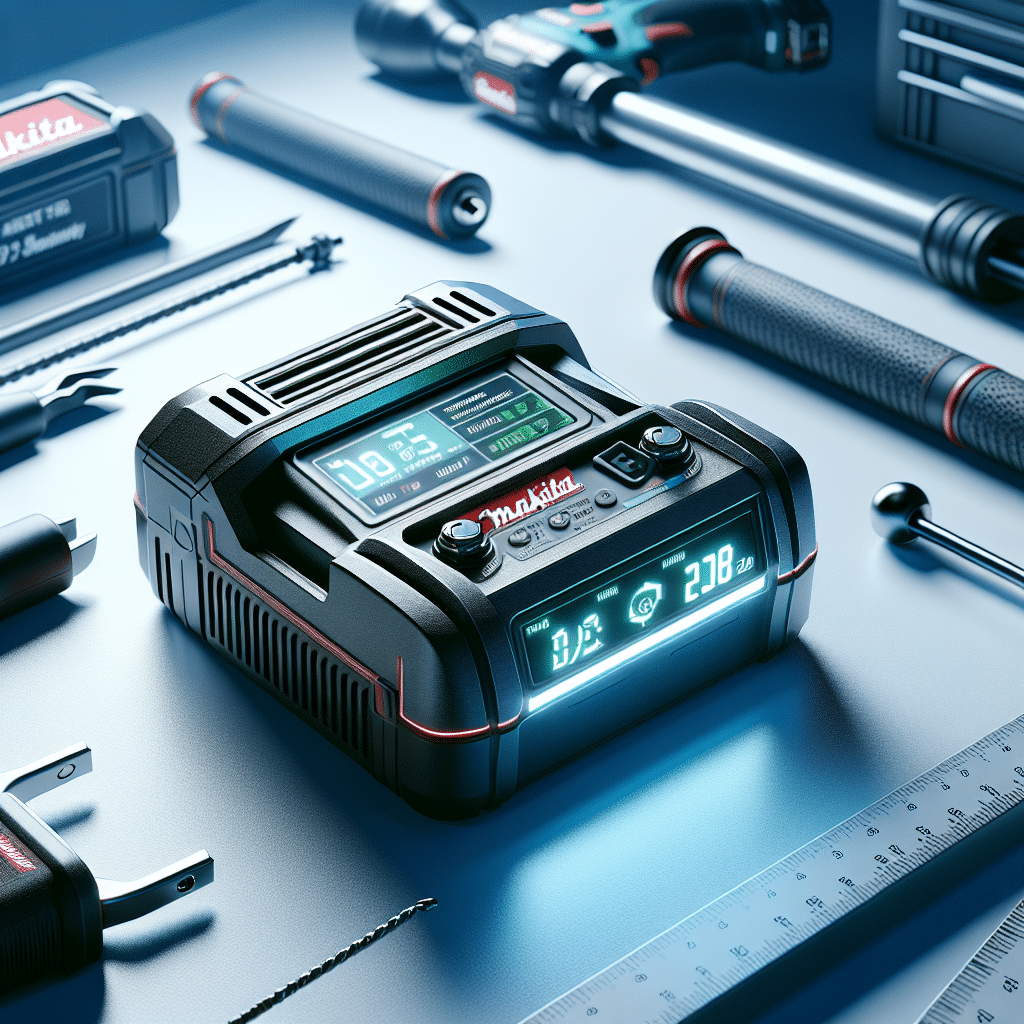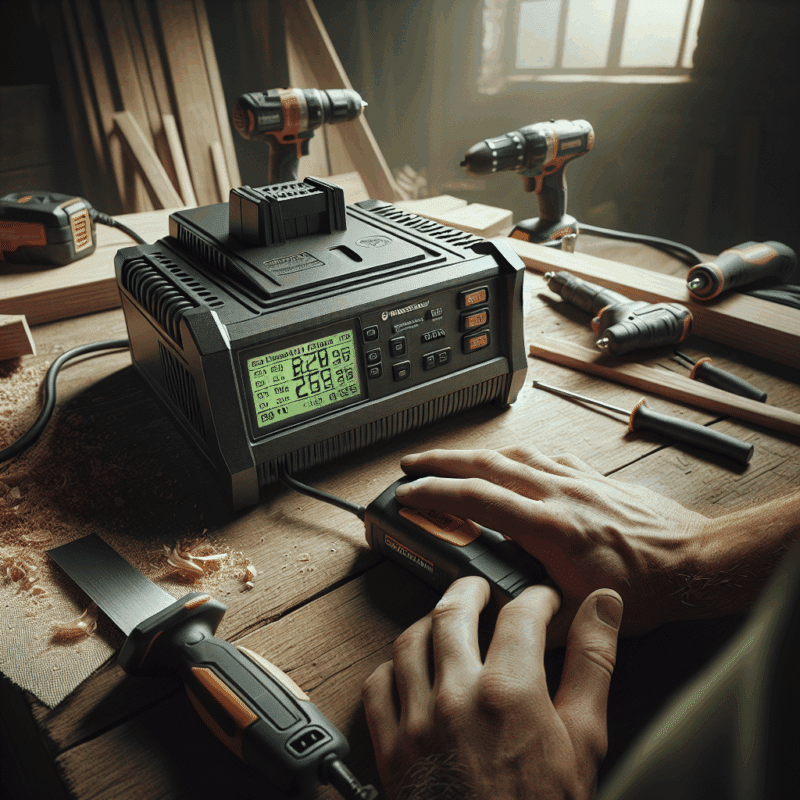How Torxup VoltGuard Stops Charging Faults & Battery Damage
In This Article
- Torxup VoltGuard enhances battery safety through real-time monitoring.
- Overcharging, poor voltage, and temperature extremes are fully mitigated.
- Smart sensors detect and recalibrate charging protocols to suit battery health.
- Generic chargers often lack these essential protections.
- Extended battery lifespan leads to considerable cost savings.
- App connectivity and firmware updates keep VoltGuard future-ready.
What Is Torxup VoltGuard?
A Smart Solution to Battery Safety
The Torxup VoltGuard represents a new era in battery safety and power tool performance optimisation. Designed for both professionals and DIY enthusiasts, this intelligent charger incorporates cutting-edge safety features that go far beyond traditional solutions. From embedded sensors to adaptive charging protocols, the Torxup VoltGuard not only charges your batteries efficiently but also protects them during every cycle.
By continuously monitoring variables like internal temperature, voltage irregularities, and charging speed, the VoltGuard reacts in real-time to any abnormalities. As such, it prevents common battery issues before they turn into costly damage. Whether you’re running cordless drills on a building site or driving impact wrenches in your garage, this charger becomes an essential piece of your toolkit.
With its ability to interact with various battery chemistries including lithium-ion and nickel-metal hydride, the VoltGuard maximises both compatibility and safety. In short, if battery longevity and user safety are priorities, the Torxup VoltGuard is the logical choice.

Why Charging Faults Happen in Power Tool Batteries
Understanding Common Risks
Battery charging faults are incredibly common in power tools, but the causes are both varied and frequently avoidable. Overcharging is at the top of the list. When a battery remains on charge beyond its full capacity, the internal chemical balance begins to deteriorate. This degradation shortens the battery’s lifespan and, in extreme cases, may even cause permanent failure or fire.
Fluctuating input voltage is another common culprit. Particularly in jobsite settings where unstable generators or poor electrical infrastructure are used, inconsistent voltage can lead to charging circuits overheating. In turn, this affects cell alignment and long-term energy density.
Additionally, many users are unaware of ambient temperature’s role in safe charging. Charging a battery that is too hot—or too cold—can disrupt its internal electrolyte balance. Such missteps can render even high-capacity batteries unreliable within months. The Torxup VoltGuard detects and circumvents these issues automatically, preventing end-user error from turning into expensive hardware failure.
How VoltGuard Detects and Responds in Real-Time
Embedded Safety Sensors at Work
At the core of the Torxup VoltGuard lies a network of embedded sensors that monitor the entire charging process. These include thermal probes, voltage regulators, and current detectors—each calibrated to detect abnormal behaviour instantaneously. Unlike regular chargers, which follow a fixed power output regardless of battery state, VoltGuard adapts in real-time to protect sensitive circuitry.
The moment an unsafe condition arises—be it a voltage spike, overheating cell, or reversed polarity—the smart chipset intervenes. Charging is paused or recalibrated, ensuring the battery is never exposed to destructive circumstances. This automated response mechanism removes the dependency on human attentiveness, making it ideal for high-volume or unsupervised workflows.
In addition, the LED interface and companion diagnostics app allow users to track charging cycles, performance history, and even error logs. This data-centric approach empowers users with a better understanding of their tools and how best to maintain them over time. The real benefit here is both functional and financial: reduced downtime and fewer battery replacements.
The Cost of Battery Damage—and How to Prevent It
Saving Money through Safety
Replacing a power tool battery can be surprisingly expensive, particularly if it’s proprietary or designed for heavy-duty use. Most professionals know the pain of paying upwards of £100 per battery, a cost that quickly accumulates across multiple tools. In contrast, using the Torxup VoltGuard significantly lowers the likelihood of needing such replacements in the first place.
By enhancing battery lifecycle by up to 40%, VoltGuard users experience long-term savings. Fewer replacements mean a better return on investment across your entire tool collection. Even in home workshops, where tools may sit unused for long periods, battery health still degrades. The VoltGuard mitigates this problem through maintenance charging and eco-mode storage functions.
Preventing damage is always cheaper than repairing or replacing, and this is where the VoltGuard excels. Combined with its digital safeguards and compatibility layer, it reduces user error while maximising power output consistency. It is quite literally a charger that pays for itself over time.
Comparing VoltGuard to Generic Chargers
Why Premium Protection Pays Off
Generic chargers, often bundled as low-cost accessories, are built for speed and simplicity rather than protection. While they may work adequately under perfect conditions, they offer little to no protection when anomalies occur. Their “one-size-fits-all” design ignores the variations between battery chemistries, environmental temperatures, and charge/discharge histories.
In direct comparison, the Torxup VoltGuard features architecture designed for intelligent response. Smart charging algorithms tailor the voltage and current delivery to the specific battery—minimising stress during charging and enhancing performance post-charge. Additionally, robust housing, built-in fans, and firmware updates keep VoltGuard in a league of its own when it comes to prevention of destruction.
The long-term reliability offered by VoltGuard translates directly into productivity and peace of mind. You’re far less likely to encounter charging-related tool failures when VoltGuard is part of the equation. For more robust comparisons between battery solutions, see Learn more about Makita Compatible Battery Charging & Protection.
Advanced Features That Maximise Battery Lifespan
From Cooling Fans to Voltage Control
The Torxup VoltGuard is loaded with features that are both innovative and practical. First among these is active cooling—quiet yet powerful fans that dissipate heat faster than passive designs, dramatically lowering cell stress during rapid charge cycles. Then there’s the dynamic voltage regulation system, which ensures that inconsistent inputs (often from on-site generators) are levelled out before reaching the battery.
Even more impressive is the ProtectLogic Interface™. This feature tracks battery health in real time, adjusting future charging sequences to optimise based on previous performance. This “learning” ability means each charge becomes smarter, contributing to a longer overall lifespan and a reduced risk of sudden drops in capacity or output.
Integrated USB-C outputs and rubberised mounts complete the package, offering extra convenience without sacrificing safety. Every new firmware update adds small benefits—proof that Torxup continues to improve VoltGuard based on user feedback. You’ll find more on their recent developments via Best practices for battery charging safety.
Best Practices for Safe Charging
Tips You Shouldn’t Ignore
Regardless of what charger you use, adopting smart charging habits will always pay dividends. Start by charging your batteries in well-ventilated spaces away from direct sunlight. This prevents thermal buildup and also reduces general wear. Secondly, unplug batteries once they’re fully charged—unless your charger has auto shut-off like the Torxup VoltGuard.
Keep your battery terminals clean. A buildup of dust and residue can cause resistance during charging, leading to inefficiencies and long-term corrosion. Use a clean cloth or compressed air before inserting batteries into any charger, and avoid using wet or cold packs unless manufacturer guidance supports it.
Also, be aware of charging cycles. Batteries degrade over thousands of cycles, but usage rhythm plays a role. Let batteries rest between heavy usage and recharging to avoid thermal overload. For a more complete safety handbook, refer to Read a related article.
Voices from the Trade: Jobsite Experiences
Real Users Share Their Insights
Electricians, carpenters, and even mobile mechanics are singing praises of the Torxup VoltGuard. Many have noted that battery malfunctions—once a monthly headache—have all but disappeared since implementing VoltGuard into their workflow. Ricky, a contractor in Manchester, told us, “I used to replace three or four batteries a year; last year, I only had to replace one.”
Others cite its real-time problem detection as mission-critical. “We work in rural Wales where power supply isn’t always stable,” noted a roofing supervisor. “VoltGuard gives us the reassurance that our batteries won’t get fried mid-project.” Such testimonials show a clear trend: smarter charging results in better productivity.
Jobsite feedback continues to influence firmware updates and accessory design. Torxup has even released a companion app that syncs with VoltGuard over Bluetooth. It allows tradespeople to monitor battery metrics remotely—a feature that’s especially popular among fleet managers and multi-team contractors.
Buying Guide: Choosing the Right VoltGuard Charger
What to Consider Before You Upgrade
Choosing the correct model of Torxup VoltGuard depends on your battery types, tool brands, and desired features. Entry-level models support single-port charging and basic monitoring, ideal for DIYers or single-kit professionals. Advanced units offer dual-port outputs, touchscreen displays, and real-time mobile app integration for a more comprehensive safety net.
Make sure the charger is compatible with your battery chemistries—this includes checking whether your tools use Li-ion, NiMH, or custom combinations. Also consider charger size and wattage if portability or on-site use is needed. Some units include integrated wall mounts whereas others feature reinforced carrying cases for field use.
Finally, keep an eye on support and warranty duration. Torxup offers an industry-leading three-year warranty for all VoltGuard models. For extended guidance, consult Comparison of EU battery compliance fees where you’ll find side-by-side model charts and accessory recommendations.
Video: See VoltGuard in Action
Demo of Live Battery Protection
“The VoltGuard took all the guesswork out of our charging routine. It’s like insurance for our batteries.” – Martin R., Site Foreman
Final Thoughts: Power Tools Deserve Protection
The Torxup VoltGuard isn’t just another tool charger. It’s a critical component in modern battery maintenance and jobsite efficiency. With its intelligent safety systems, robust build, and user-friendly features, VoltGuard outperforms traditional chargers on virtually every metric.
From real-time thermal monitoring to predictive charging adaptations, it offers unmatched peace of mind. It ensures your investment in power tools yields long-term returns—not only in battery lifespan, but also in consistent, on-demand performance. Choose the safety route. Choose VoltGuard.
Great guide on interactive-torxup-voltguard-battery-protection – Community Feedback
How does Torxup VoltGuard prevent battery damage?
Torxup VoltGuard constantly monitors charge rate, temperature, and voltage. If it detects irregularities, it auto-adjusts output or stops charging, preventing overcharge, overheating, and battery cell degradation.
Are advanced safety features worth upgrading to on my Makita charger?
Yes, advanced safety features like on Torxup VoltGuard help prevent costly failures, reduce fire risk, and extend battery lifespan, delivering better site performance and value in the long run.
What are common signs of charger faults?
Common signs include charging interruptions, hot batteries, erratic charge times, or indicator lights flashing. If these occur, use a charger with advanced protection to avoid battery damage.













